According to reporting by Richard Scott at Naval News, the Royal Navy is exploring a new uncrewed surface vessel, known as Type 91, intended to act as an arsenal ship complementing the future Type 83 destroyer under the UK’s Future Air Dominance System (FADS) programme.
The image above is merely a concept for the vessel.
Speaking at the Navy Leaders CNE 2025 conference, Commodore Michael Wood, Senior Responsible Owner for FADS, described the arsenal ship as part of a wider shift to a disaggregated, system-of-systems approach to naval warfare.
The Type 91 concept remains in a pre-concept phase, but would provide “resilience in depth” by offering additional missile capacity in support of more complex platforms like Type 83.
The vessel would be uncrewed and equipped with a deep magazine of missile launchers. It would not operate independently, but rather as part of a force-wide network linking sensors, effectors and decision-making systems across the fleet.
Commodore Wood suggested the approach would help meet the challenge of massed missile attacks. The Type 91 arsenal ship remains speculative and will depend on funding outcomes from the Strategic Defence Review and the upcoming Spending Review.
Read the full excellent report by Richard Scott at Naval News here.
Type 91, 92 and 93
Recently, we reported that The Ministry of Defence (MOD) is pursuing “a deployable and persistent wide area ASW search capability” built around the new Type 92 Sloop – an uncrewed surface vessel – and the Type 93, a drone submarine, according to an industry notice. Imagery associated with the programme suggests the aim is to monitor the GIUK (Greenland-Iceland-UK) gap.
The initiative, called Project CABOT, seeks to “accelerate the RN’s pivot to autonomy with a specific focus on Anti Submarine Warfare,” integrating “lean-crewed, remote-operated and autonomous airborne, surface and subsurface vehicle, sensor and node.”
According to the MOD, “Project CABOT is the plan to deliver remotely operated and autonomous ASW capabilities, allowing UK to pivot to vision of ‘Digitalisation of the North Atlantic’.”
This project builds on Project CHARYBDIS, previously delivered by the Submarine Delivery Agency (SDA) under the Defence Innovation Unit’s “ASW Spearhead” programme. Recent “technological and digital breakthroughs achieved by the (UK) ‘NATO ASW Barrier’ Smart Defence Initiative” have also helped pave the way for CABOT’s next steps.
According to a Pre-Procurement Notice published in the UK government’s Contracts Finder, the MOD is launching an early market engagement to “commence a conversation between the Royal Navy and Industry Partners on capability’s that will accelerate the RN’s pivot to autonomy”.
The notice clarifies that Project CABOT will proceed in two phases:
Phase 1 – ATLANTIC NET
Delivering “ASW as a service” through a Contractor Owned, Contractor Operated, Naval Oversight (COCONO) model. “Lean crewed, remotely operated or autonomous uncrewed systems, delivered by an industry mission partner,” will gather “acoustic data, triaged by AI/ML algorithms,” then transmit it to a “secure Remote Operations Centre (ROC) for analysis by RN staff.” This setup aims to “significantly increase mass and persistence at sea whilst releasing traditional RN platforms for other tasking.”
Phase 2 – BASTION ATLANTIC
Shifting to a government-owned, government-operated (GOGO) model in which the Royal Navy “own and operate USVs (Type 92 Sloops) and UUVs (Type 93 Chariots).” This phase also considers “a host of other sensors, to deliver mass and persistence in the North Atlantic,” as well as exploring “UK developed Underwater Battlespace Area Denial (UBAD) capabilities.”
As part of CABOT’s broader heritage, the SDA has commissioned the Defence and Security Accelerator (DASA) to seek “innovative related technologies and sub-systems,” inviting submissions from across the Technology Readiness Level (TRL) spectrum.
The broader aim
The MOD emphasises that the objective is to “build a better understanding of current market capability and potential developments to inform decisions on how best to go ahead and deliver Project CHARYBDIS.” This could include evaluating “opportunities for disruptive future capability,” determining “the required level of modularity for future systems,” and clarifying “choice of interfaces.”
Although this process does not yet commit the MOD to any specific development path, it highlights the Royal Navy’s drive toward scalable, autonomous anti-submarine warfare solutions. When and indeed if fully implemented, Project CABOT aims to bolster the Royal Navy’s capacity to detect, track, and deter submarines across the North Atlantic, particularly around the vital GIUK gap.
By employing drone ships and submarines in tandem with advanced sensor networks and AI-driven analysis, the Royal Navy stands to enhance its maritime surveillance, free up crewed warships for other missions, and fulfill an evolving strategic requirement to protect sea lines of communication.
At the UK Defence Journal, we aim to deliver accurate and timely news on defence matters. We rely on the support of readers like you to maintain our independence and high-quality journalism. Please consider making a one-off donation to help us continue our work. Click here to donate. Thank you for your support!


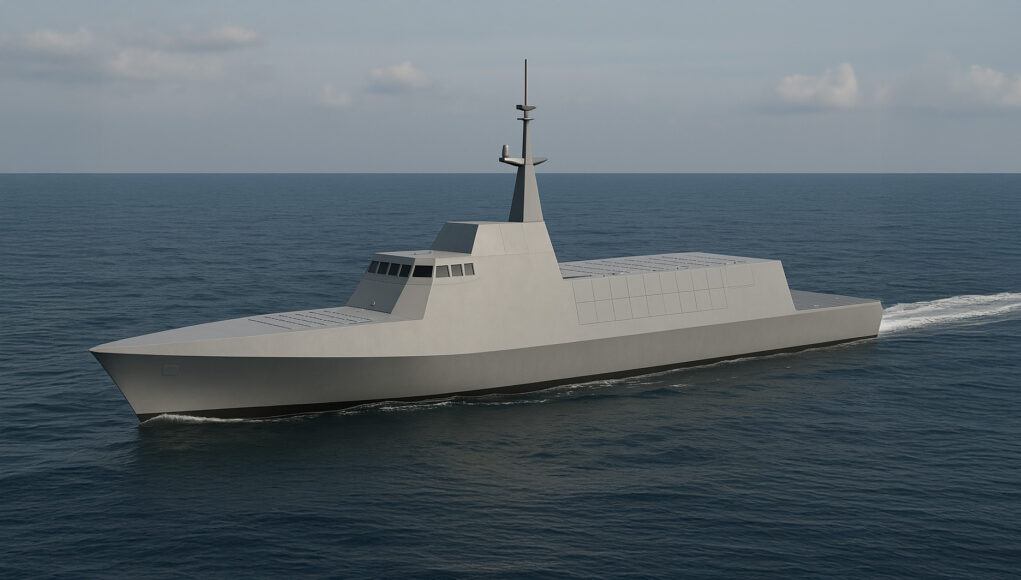
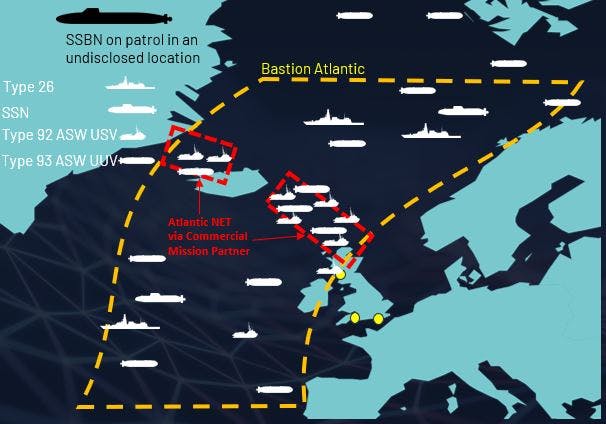
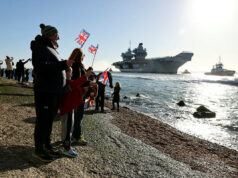


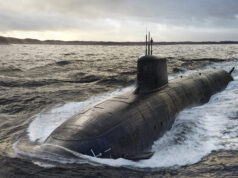
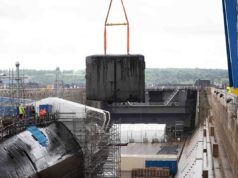

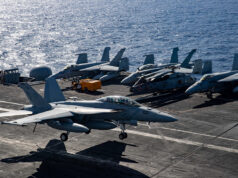
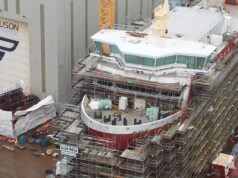
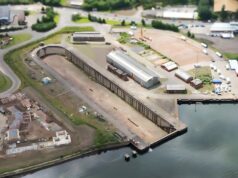
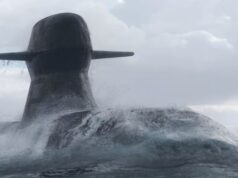

Screw contractor owned and operated! Our needs will change then we will find we can’t adapt due to being tied into a contract. What could possibly go wrong? Don’t do it!
COCONO may be the daftest acronym I’ve heard of in a while, but it makes sense for trying to rapidly generate capability. Outsourcing the initial setup and operation to contractors avoids having to pull limited volumes of sailors away from existing taskings, until the system – or a successor – is brought in-house.
In an ideal world, it wouldn’t be necessary, but we don’t exactly live in an ideal world. Hence the warships with very large missiles.
Makes complete sense to ‘rent’ the capability while it’s being proven.
If it works, the RN buys it.
If it doesn’t, the RN looks elsewhere and hasn’t bought junk.
Yes, that was my take on it as well. Sounds like a good approach to take.
Sorry, that’s a short-sighted policy. You pay a civilian contractor to put it through proof-of-concept and give away the know-how to an organisation that can sell the IP to another country. It happened five years ago with some software for the RN. That company was purchased by Accenture, which closed the UK operation and moved the IP to the US, where it is now completing the project for the DoD in Washington, DC. The system will be used on USN platforms and not RN. How much does it cost to replace a QE or T45?
Fair challenge – I wasn’t aware of that example. Thanks.
My take was based on the assumption that you have to put sufficient safeguards in place so MOD own the IP and take the service in-house. Otherwise the whole approach falls over: how you effectively nationalise the capability if the private sector owns the IP and can sell it on as they see fit!?
If there are no safeguards, the situation you outlined is a real risk. Let’s hope they make sure there are protections in place, and that this approach to procurement gives us tangible benefits in terms of costs, timeliness and quality.
To me, it seems another way of moving away from the highly bureaucratic and cumbersome procurement processes we’ve been using for decades and which must be at least partially the cause of the perennial cost overruns we see.
(I read an article on the German procurement system and it sounds so dysfunctionally front-loaded in its requirement setting – all written in a head-spinning level of detail – you can completely understand why the German forces are now in a mess).
I like the new, more streamlined approach that’s been used recently for the procurement of things as diverse as the Type 31, Gravehawk and the SA80 replacement.
Set a broad set of requirements, and let industry propose the solutions which you can evaluate. Build a partnership that allows you to move quickly and then rapidly iterate improvement.
Fingers crossed it all pans out.
For the ASW capability, the private company would only provide the ships and crews. The ASW would be remotely operated by RN personel, with AI triaging the raw data and passing back to a central location that which is useful.
The Navy would be well advised to follow the Dutch lead and use commercially operated Damen FCS, similar to XV Patrick Blackett, to quickly acquire both the ASW and arsenal ship capabilities. Once any wrinkles are ironed out, they can determine if a bespoke vessel is more appropriate, though the ability to put containerised systems onto ships of opportunity remains very attractive.
Don’t worry Serco’s on the job.
Its only COCONO for phase 1, which enables industry to put together a consortium to develop a ‘static’ surveillance system using wave gliders, sail uavs etc. Phase2 has active ASW which is GOGO and Type 92/3. So you blend a contracted ‘SOSUS’ with a naval ASW system.
Why does it need a bridge if it is uncrewed?
See 2nd sentence.
“Please read the question fully before writing your answer”.
Virtually all LUSVs need to be able to embark a small crew, for inshore or harbour pilotage, for maintenance and for launhcing and operating offboard systems. Hwoever a 1,500 ship might have a crew of only 6-8.
An arsenal ship makes a lot of sense given it is virtually impossible to replenish missiles in vertical launch tubes at sea.
Yes, with missiles costing up to $10 million a go for the top versions of SM3 it makes loads of sense to stick all your very expensive weapons on an unmanned, un armoured and un protected barge as opposed to a destroyer that has layered weapon systems, CIWS and ECM.
This is pretty much what happened to Atlantic Conveyor.
They are coming across much the same issue with loyal wingman drones. If the drones are cheaper they are slower, less stealthy and less survival able. They quickly become a liability rather than an asset.
Yeah, you’ll need to have a manned frigate escort the unmanned arsenal ship from port to the Type 83 AAD. After which the frigate presumably escorts the relieved empty arsenal ship back to port for reload.
The arsenal ship will be a prime target for the enemy, just like a freighter carrying munitions.
Would it not be in close proximity to said Destroyer and hence protected?
And carrying the pointy boomy bit of the protection itself…
Not if a missile is inside the task force thats when you need ECM and CIWS.
That’s pretty much exactly what happens to Atlantic Conveyor, all the warships had chaff and jamming capability and the missile ended up locking on to the biggest thing with no protection.
Comparing the Falklands with the shocking levels of air defence we had to a T45 or even T23 equipped asset is not a comparable scenario.
If these vessels are relatively small compared to a destroyer/frigate and relatively stealthy they wouldnt be in the scenario of atlantic conveyor.
The article states it will not operate independently and will therefore be under the protection of the group
Should change your name from Jim to reality check to the armchair admirals in this group.
The US navy looked at this concept in the 1990s for land attack and came to the conclusion it made no sense. Plus they would not be able to afford to stock the ships as some concepts had 500 missiles on one ship.
I realise the Albion and Bulwark are on their way to Brazil, but could they have been converted into an arsenal type ship /hybrid drone carrier. They have added advantage of the well deck and it has been very obvious the use this could be for ‘Sea-baby’ or jet ski type drones in addition to a large flat deck, part of which could be used for swarm drones in addition to the possibility of containers of easily swapped out, off the shelf ATACMtype missiles or Tomahawks in addition to a lot of MK41 cells.
Interesting proposal, and one that, should it come to fruition, would be very useful in adding mass to strike groups and surface task forces. That said, I suggest that the Type 83 itself be equipped with many VLS cells, at least 80. Should the Type 83 project run into issues, then the Type 91 seems to be the easiest to cut. Then, much akin to the current Type 45 destroyers, the RN would be left with destroyers with a potent sensor suite yet not enough effectors to make effective use of those sensors.
The UK will run out of very expensive missiles on a T83 long before it runs out of VLS.
The upgraded T45 is hardly bereft of effective and substantial numbers of weapons and ammunition
The map clearly leaves a gap towards the Baltic, is this just a mock up image or will this cover their on top of the Atlantic approach and the northern stretches?
It’s a completey accurate and detailed map of the actual and intended ops published at least ten years prior to implementation.
( just don’t wave it around for all and sundry to see).
The Baltic? Aka Lake NATO?
Clearly it’s an accurate map with planned positioning of naval assets. As such it’s UK Eyes Only and won’t be publicly available…
If the RN is going to go down the uncrewed route for a missile carrier, why not take it to its logical conclusion and just make it a barge that’s towed behind the carrier?
[Assuming you’re not joking]
There’s more utility in having them be independently capable. It not only extends the capacity of the destroyer, but its reach as well. Having a missile carrier sailing 50 miles away from the radar, and you gain 50 miles of engagement envelope over the destroyer on its own.
I was being just a teensy bit sarcastic…
But seriously, I would have thought a vessel like this might need a small crew, just in case something goes awry, if it is going to be accompanying a carrier group for weeks or months.
Honestly it’s probably not a bad idea. If a war happened all our escorts would be tied up protecting the carriers and so any offensive ship would need to stick with the carriers or get sunk by subs.
I really don’t get why we keep buying specialist ships that effectively can’t fight alone due to lack of all threat defense.
The t45 can’t operate wituoit the t26 and the carriers can’t operate wituoit both.
Not sure if sn arsenal type sub would also be an option?
Why put your arsenal in ship without limited defence this just nuts ….
I’ve seen the Type 91 specified as being both unmanned and minimally crewed, depending on the concept. Having some crew onboard to operate a CIWS makes sense.
I just know as an attacking navy against ours, I would target the ships first. This would seriously degrade the Royal Navy fire if they have limited defensive capability they’re gonna be easy to take out compared to the main ships. What about attacking them with submarines they won’t have any Sonar for instance.
I just don’t see where the advantage is we don’t have enough missiles to fill our Mark 41 launches that we’re building currently anyway. The tight 26 is going to have 192 of them across the eight ships and the type 31s going to have 160 never mind that we need more missiles for land base systems anyway I just don’t get it. I think it’s a stupid idea.
They’re also talking about 12 submarines which are going to need more missiles. How many Tomahawks are we gonna have to buy to fill these up or storm shadow equivalent or spear? Whatever it turns out to be.
Then you got a land launched version of storm shadow and all spear coming down the line. During all this time, we need to build a layered missile defence system for the UK mainland.
I do think we should be buying the land based Naval strike missiles for coastal defence just a limited number of those mobile units would give us a good reach out from our coasts.
“Talk/Words” call for “Up to 12”, we already have 6/7.
IF you have a CIWS you need a radar as many have short range on built it, but with ballistic missiles a CWIS is too late as the missile is hitting you anyway if they even look upwards…
it a nuts idea.
The second paragraph, “The image above is merely a concept for the vessel.”
But also, Unmanned doesn’t mean “Will never need to be manned.”
What happens if the remote control goes down? Can we man it for low emissions missions? Might it be worth manning to defeat boarding parties? Plenty of reasons to have a bridge on a ship that is not meant to be manned at all times.
Plus of course you don’t want it going rogue for instance when it’s transiting the Suez Canal. Having someone on board to switch off is not a bad thing.
Or eve coming alongside in Portsmouth.
Just a thought, but with all this emphasis on switching various capabilities to uncrewed vessels, have we given sufficient consideration as to how we handle the security of these assets at sea? I am sure we all remember the Iranian incident in the Gulf, but if there is no crew, how do you prevent seizure or other interference?
Or simple salvage claims? The US deployed unmanned drones in the gulf and the Iranians grabbed them. Not a lot the USA could do. The Iranians called it a shipping hazard.
It will need to cope with all sea conditions. Not be so noisy that it interferes with fleet ASW ops or gives the position of the Type 83.
There will need to be maintenance crews on standby and a means to get them on and off the ship to repair it safely and to load replacement parts such as for the diesel engines..
If it’s carting £100m worth of missiles in it’s silos it will need redundancy and automated fire fighting equipment.
Why not just a small crew?
With the land based naval strike missile system, I reckon for the price of a type 31 inexpensive frigate you could buy enough mobile Lamba systems to cover the whole of the UK comfortably. So freeing up the need for local patrols of cricket size class think of it this way our river class ships could control around the UK knowing they are backed up with land base naval strike missiles.
Great idea, won’t happen. We haven’t reached the point where major military assets are politically viable without crews. Local pm and newspapers would run stories for months on job losses.
The type 92 makes alot of sense. It’s very possible to use cheaper commercial ships to pull towed arrays. The US navy did this for decades as part of SURTASS. The type 93 probably makes sense although it’s much more likely to be some form of glider deployed in large numbers as opposed to a very expensive UUV. Such UUV’s make a lot of sense for weapons deployments in constrained and shallow areas but are probably less useful out in the Atlantic operating as sensors.
However I’m not convinced the type 91 will be useful and it’s certainly won’t bring mass to the T83. You very much can reload CAMM at sea and if your talking anything more expensive like Aster 30 or SM3 then how many are you going to be able to shoot off before running totally out in the navy.
CAMM can and should be developed to go into PODS and you can stick that on the back of a work boat and call it a type 91 but that’s as far as we should go.
And look what happened to Atlantic conveyor …. We lost most of out helicopters for transporting troops using a commercial vessel.
That’s almost exactly my thinking.
Type 92 has the potential to be an incredibly useful platform and in enough numbers could well neutralise Russia’s threat of lone wolf cruise missile attacks.
Type 93 I disagree, it needs to be a very quiet and stealthy UUV, larger than those that have come before in order to carry a useful sensor setup. Alternatively as a coastal attack submarine at periscope depth for man-in-the-loop operation it could be very capable indeed, but that CONOPS would need extra work. In general, look at MSubs’ MORAY concept, based off their largest and most capable target representation submarine.
Type 91 is a mistake, either upgrade T31’s AAW or build more T83, not a new hull to carry a modular system already on existing warships.
We should be going down the same route as the Netherlands, and using a slightly modified Damen Fast Crew Supplier type ship. A modified FCS 5209 for example (basically 53m long, 9.8m beam) would be big enough to carry a decent number of shipping containers (PODS/Cubes), to allow for ASW/ASuW/AAW payloads as required. We already have the XV Patrick Blackett trials ship, based on the slightly smaller Damen FCS 4008. You could fit a VDS too if desired, to act as a picket ship. Add a Sea Giraffe 1X Radar, and either a DS30 30mm or Bofors Mk4 40mm for self defence. Best of all, it would be small enough to fit up to four onto a single heavy lift ship, like the RollDock. That way they could be moved around as required. Yes, they’ll cost a lot more than a barebones ship, but they’ll be far more capable.
You make it lightly manned, not unmanned. We have seen in the Red Sea & Persian Gulf that potential enemies have no reluctance to shoot unmanned systems, because they’re considered fair game with little risk of retaliation. When you’re talking about a ship costing at least £50-100m, with about the same again in missiles on board, they need to be protected.
What we need now is a ten year study into the practicalities of the various options that will be available should they be developed, subject to finance at an time in the future. Alternatively, we could order more T31’s and Typhoons.
Not this again. Read “arsenal ship” and Monty Python “Run Away, Run Way”. There is no such thing as a drone warship. Who is operating it for Diabolos’s sake.
…as long as it’s not Captain Optimus, we can’t afford any more colliding warships.
This is an excellent idea and something I mentioned a while back. As part of the CSG it could add real mass in terms of numbers of missiles. The current destroyers could easily find themselves overwhelmed in a mass attack. Personally id also like to see the return of a heavily armoured surface combatant. 80k tons, composite armour, powered by a nuclear reactor, carrying long range precision strike missiles, 500 sea ceptor missiles, multiple dragonfire and my favourite, 16 inch guns firing everything from guided projectiles to DU shells. It might not be so nuts.
Honestly the only reason they want to contract out is to get around the poor pay. Pay more you’ll recruit more. Government do this all the time it’s bad press to give anyone a significant pay rise so to avoid it contract out.
It is not the pay which not bad, it is lack in pride in our armed forces anymore, make the UK proud of our Navy/ Air Force and Army again and people will sign up. all anyone has heard for years is Cut Cut Cut, so this increase should help i have already seen better adverts hitting social media.
Sounds good.
Lots of what HMG says sounds good.
I’ll wait till they exist.
To be honest I cannot help but think ‘here we go again… hairbrained ideas.com, where far fetched notions, could become your reality’! (terms and conditions may apply and comes with gold plated price tags)
On a serious note, I do think we need to slow down on the autonomous AI driven R&D a little. ‘Terminator syndrome’ could well become a real life threat to humanity, given the break neck speed that robotics are developing at.
I get AI underwater for guarding infrastructure.
The type 91 is nuts idea and waste of money they will be targeted as an easy kill.
I don’t know if it is a good idea or not, but as it will operate as an extension of the Air defence Destroyer (certainly in terms of Air Defence) then one presumes it will be as defended as the Air defence Destroyer itself, which after all is that Destroyer’s job to defend all within any task group. If it isn’t capable of doing so including unlike an arsenal ship missile-less RFA vessels and lest we forget the carriers, then the whole point of the task force itself would seem to be pretty pointless as a concept.
Well if the opposition aren’t slowing down on research (and they aren’t) and the two ahead of us far more advanced overall in AI mass then I’m not sure how slowing down protects our particular humanity. a bit like saying slow down on developing the Nuckear bomb for exactly the same reasons while other Countrues build up large stockpiles.
That said you are right it’s damn scary but the movement of travel is unstoppable sadly, too much self nterest and fear of others getting what we don’t have access to, rather like the US slowed hypersonic missile development and ended up spending more to catch up.
You should really look at what china are doing.. all the while they are funding then biggest navel warship building programme in history they are pushing out investment in innovation like nothing we have seen before.. they have build or are building
1) hybrid electric submarines with nuclear reactors
2) 500 ton full fat autonomous stealth surface combatants.. with 30mm cannons, AAW missiles, anti ship missiles and ASW torpedoes
3) large amphibious drone carrier with a catapult for drones
3) duel hull stealth drone carrier
You got to wonder where and how China gets access and know how to all this technology and putting it all into service so quickly!? Some of it must be copied but we’ve got to give them some credit for their indigenous industry…and try to get and stay ahead where possible.
This is the thing people forget about China even when it was essentially a third world country in the 1960s it managed to bootstrap itself up to making SSNs and then SSBNs.. although Russia gave some early help in the 1950s around developing an A bomb.. China bootstrapped itself into the SSN and SSBN game.. China is now practically a peer superpower with the US.. we should be very very worried and never ever consider any lead we have to safe.
The armed forces think there’s more money on the way (poor deluded things) so they are floating all their pet sexy ideas now in the hope they can grab some of it. Rats in a sack, which suits the Treasury. Actually buying useful stuff asap is far too easy.
All this might be good for the near future but what about here and now? Re-asking, why no mk41s or even Exls put onto the T45 right now? With Quad CAMM he load could have been doubled. Same for the T26, CAMM if 4×24 could have been doubled to 96. T31, when are the 4x mk41s being inserted? Has a hybrid CAMM/mk41 been considered? All these silos to fill, where are the missiles for them? Part of the 7000? Will there be any monies left for land based GBAD? Reminds with the NYE fireworks night here in Sydney work goes on all through each year in preparation and then when the time comes everything is in place and goes off (in less than 15 mins) but it’s spectacular. Looks like there’s lots of stuff going on here and we hope it all shows up when needed!
Bloody media and others here are whinging here about the RAN’s bloated T26s. Hope they can point the finger back at themselves!
The big issue I have with this is that a mixed bag of 700 aster 30 and 15 just cost Italy 2.15 billion dollars.. so say you have 7 arsenal ships each 100 missiles to load it up is costing you .3 billion pounds that is the cost of a T31 just for the missile load..mow the MK 41 silos are even worse.. 100 mark 41 silos is 1.3 billion pounds now do you want 1.6 billion pounds of missiles and silos on an unprotected civilian level barge.. because when that surface action group or carrier gets attacked the barge with all your expensive missiles will be the first to get it.
1) a large unarmed vessel can occlude the firing lines of the escorts.. putting itself and the escort in danger.
2) if the escorts have soft kill and the barge does not then the missile will go for the baege after its lost lock on the escort
3) the barge will not have the poor damage control..low to no crew and civilian standards are a disaster.
4) it will be a primary target
In reality the T91 will be as precious and import to the surface action group or carrier battle groups as any of the major escorts because 1.6 billion pounds and a fair percentage of the UKs Aster stocks is not an attritional asset and will need self protection to reflect that.. essentially it will need soft kill, it will need its own sensors, it will need point defence guns as well as point/short range air defence missiles. It would need damage control.
Essentially the arsenal ship would at a minimum need to be an escort.. with some functions stripped out.. no ships flight, or flight deck, no ribs or mission decks, no offensive armament, no medium gun ( unless it’s a defensive medium gun).. but it would still need to be warship standard ( low crew means very high survivability standards are needed, 40mm guns, CAMM, soft kill and sensors..with a crew..
So say your basic self defence escort hull with weapons and sensors is costing you .3 billion, you have 1.3 billion in MK41 launchers and .2 billion in missiles
….thats 1.8 billion a pop.. or about the same as 3 brand new Italian FREMMs EVOs.
I think this will eventually end up being a minimally manned platform, with 20/30 personnel on board.
It will need to have endurance, manoeuvrability, good poor weather seakeeping and sustained speed, in poor weather etc, because there’s no point riding shotgun, if you can’t keep up with the wagon train!
It will require its own self defense mounts, twin 40mm bofors, or similar.
I would think we are looking at a 3,000 ton, semi automated Corvette type thing….
So we are already looking at somthing more expensive than a motorised barge with a mk41 bolted into it.
You are overthinking it. Think of it like a trailer on your Type 45. The hull can be built anywhere. It doesn’t even need to be a ‘warship’. It’s a container for a ton of missiles under the control of a destroyer. Frankly I cannot see any other way the RN can seriously improve it’s firepower. Arguably those living in la la land are those who won’t consider it. We don’t have the crews for more ‘warships’. The one’s we do have are hugely outnumbered and could easily be obliterated by a mass drone attack.
Your missing the point each MK 41 silo and Aster missile is 15million pounds.. that’s 150 million for 10 or..even if you stick it on a barge that’s billions of pounds of investment and hardware… on a barge that is going to die to the first leaker.. those missiles and siloed are eggs that need protection.. this is the problem with modern navel warfare everything needs protection until it’s used.. that barge if it has 100 aster will cost more than a T45.. the decent warship hull and self protection is actually the cheap bit.. a 6000 ton T31 with 57mm, x2 40mm x 12 CAMM x sensors, hanger, mission bays etc costs less than 20 mk41 silos with aster 30 in them.
Nope. I’m not missing the point. Firstly I can’t comment on the cost of a silo+ missile, unless you supply a source for the figures. The figures ive seen are nowhere near £15 million. Either way the cost of putting it on a Type 45 will be more. Plus as ive already said we don’t have the crew. Protection is either provided by it’s own missiles or the Type 45 controlling it. A drone ship is also far cheaper to run on a daily basis. It’s where fleet defence is going.
I actually got my maths wrong to be honest, the latest order you can track is 8 modules for the royal Netherlands navy, 8 mk41 modules.. estimated total order cost is up to 250 million pounds.. which is about 4 million per cell..the 2 million per aster 30 comes from the Missile defence advocacy alliance, but is a year out of date..so you can add 5% to that.. but it’s still a cool 6 million per missile, for missile and silo..
Except it’s not even as capable as the barge of war fighting
Talking of costs, if mk41s/Exls are so expensive with the CAMM why can’t they make the current 6 silo pack into a 9 or a 12 or even a 24 for the same space footprin? Keep the mk41s for the bigger missiles. If CAMM/CAMM-MR don’t need to be strike length maybe the existing structure is deep enough and may need some strengthening if made larger and heavier. And why are they sticking with the 6 cylindrical tubes for the case containerised CAMM? Wouldn’t square/rectangular be more space efficient?
The concept of an ordnance barge or missile barge is not new. Having them unmanned is. It’s a brilliant idea and so is leasing them until the idea is fully proven. Modern naval warfare is a VLS numbers game. Having a simple seagoing hull design (large trawlers/container transport) packed with cells, slaved to the fire control of manned vessels. Makes them serious force multipliers. Even smaller unmanned vessels could be utilised as sensor carriers and networked just like other assets. Complexity equals cost. So KISS.
I can’t get away from the mindset that just equipping T26/31/32 with appropriate VLS to carry out this role is a better idea.
Do we really want such extraordinarily expensive unmanned vessels? I mean, the point at which they’re carrying such a valuable payload, they become non-expendable, which surely undermines the key advantage of all things unmanned.
They really need an edit function on this site.
This is a Frigates role through and through. Not a drone’s and certainly not a QE class role.
Yes that is the problem 100 MK41s and Aster 30 is around 1.5 billion pounds.. why the hell would you make a 1.5 billion pound unmanned barge that is going to die to the first leaker..when it masks the guns of the escorts.
We already have the perfect arsenal ship- a generally half empty aircraft carrier. The SDR suggested firing strike missiles from the carrier decks. Far better to fit AAW so that the carrier can defend itself, instead of relying totally on a T45 which needs a second vessel to augment the missile load.
No other navy operates carriers with such feeble air defences as we do.
No navy operates a carrier with destroyer level air defences, for good reason, not enough space and far too expensive
If it’s an Arsenal ship, does that mean it will look good and offer a lot of threat but ultimately come up short when put to the test?
There is a reason that no one has yet taken the arsenal ship concept forward.. it’s because the weapon systems cost a fortune and you don’t want your insanely expensive mk4 siloes and missiles on anything less than a full fat warship that can protect them.. a single MK41 with an Aster is probably around 15 million.. so 48 etc is a vast capital investment ( the equivalent of 2 type 31s) before you put it in a ship.
The that is why every other nation is building very large AAW ships ( 10,000 to 15,000) tons for their next generation AAW destroyers so the insanely expensive silos are protected by a platform designed to survive against air threats.. putting those 90-100 silos in a safe place..navies are creating mass distributed systems by placing secondary long range radars and silos on second tier AAW, GP and ASW ships… take Italy as an example it will build 2 all singing 14-15 thousand ton AAW ships with nest generation radars and 100ish silos..( that will be bolted to the carrier) have a second tier AAW destroyer at 7000 tons..then ensure each GP and ASW escorts are fitted with good but not exceptional long range search radar and 16-32 silos for Aster missiles.. that’s a distributed system. Each component is well protected and can also act as a redundancy.. the last long range radar dies with the last escort as does the last aster missile.
Personally I think the RN are saving a penny and costing a pound and instead of creating resilient distributed system.. they are creating a system with a number of single point failures.. kill the T83 they have no long range radar..take out the easy kill barge and they most of their asters taken out..kill both and there is no long range AAW left in the CBG.
They have the T31.. turn the second batch of that into a mark 41 aster AAW focused warship.. give it a long range search radar.. so it can stand alone as a AAW asset.. save money and space by stripping its hanger and flight deck.. there is your AAW second tier support to T83 and T45 it’s a baseline .3 billion warship that can safety hold and use the 1.5 billion in silos and aster… don’t save say .2 billion and build a pointless at risk 100 silo barge
Stripping out the hangar saves no money, not for a radar.
There is no second batch of T31 and won’t be
Italians are getting 80 VLS but only 48 launch aster
The small flight requirements for a ship is actually a quite expensive bit of kit, the flight deck, weapons handling, maintenance etc is not cheap and not including it does save money.
Another fantasy idea from the back room ‘Admirals’ who really haev little idea. In the end you need some people onboard to fix the things that will go wrong (they always do) and of course even conduct damage control etc. Far better to have real Ships doing a real job and the T31’s are a good sound vessel and by getting a few more even CAMM gives it a good fight but in the end you simply cant beat a good old GUN putting out killer rounds. KISS works and is far more adaptable. Silly ideas by fantasy dreamers.
Order anther 5 T31’s with an ASW and give the RN some real mass that others will respect!
Agree.
I really don’t see this happening . Another fantasy fleet idea and knowing the bean counters if it were built it would be “fitted for but not with” missiles. 🙂
I’m not at all convinced by the concept of a uncrewed warship -.at least not one of this scale and importance. Human Beings are precious, expensive and all too fallible of course. However, they are also flexible and in many ways display far more intuitive intelligence than even our best machines are as yet capable of. Those qualities allow them to adapt to situations that a entirely automated warship might be utterly unable to cope with – for example a small fire or hull breach should be a manageable situation for a competent damage control team to deal with but may prove to be disastrous aboard a fully automated ship. What if the vital communication links between the crewed command ship and it’s uncrewed counterpart become compromised in some way, or if the command ship is taken out before the automatic ship? Attempting to RAS a uncrewed ship would also appear to be a challenging concept in the real world.one might think.
The war in the Ukraine does shows us that the nature of warfare is rapidly changing and will almost certainly become too lethal for human beings to take part in one day – for good or bad. But I seriously doubt the age of the major uncrewed warship is with us yet.
LOLOLOL.
Imagine that going around “equipped for but not with”
About as much use as a chocolate teapot.